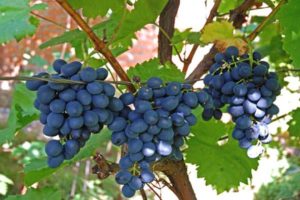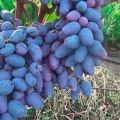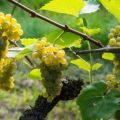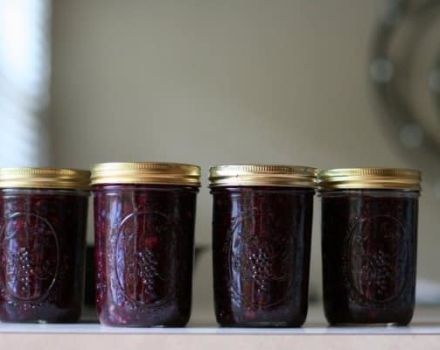Description and history of Platovsky grapes, cultivation, rules for harvesting and storing crops
Growing grapes is a healthy and tasty experience. You can eat grapes not only raw, but also processed - as juice, compote or wine. For such events, special, technical varieties are developed. One of its representatives is Platovsky grapes. For what he fell in love with gardeners and is gaining more and more popularity, we will figure it out below.
Breeding history
The variety first appeared in Novocherkassk, thanks to the efforts of Y.I. Potapenko. Two varieties were taken as a basis - Hungarian Zaldande and Ukrainian Gift of Magarach. The result exceeded all expectations. The culture turned out to be tasty, fruitful and frost-resistant.
Thanks to this, grapes today can be enjoyed not only by residents of warm regions with a mild climate.
Advantages and disadvantages
The following features are distinguished from the advantages inherent in culture:
- Systematic yield.
- Unpretentiousness to the surrounding conditions.
- Frost resistance, thanks to which the summer resident does not need to worry about additional safety measures to preserve the variety for the winter.
- Fungal diseases and insect pests inherent in the culture bypass Platovsky, thanks to his enhanced immunity.
- It takes root well in a new place, after which it shows intensive growth.
- The crop ripens quickly.
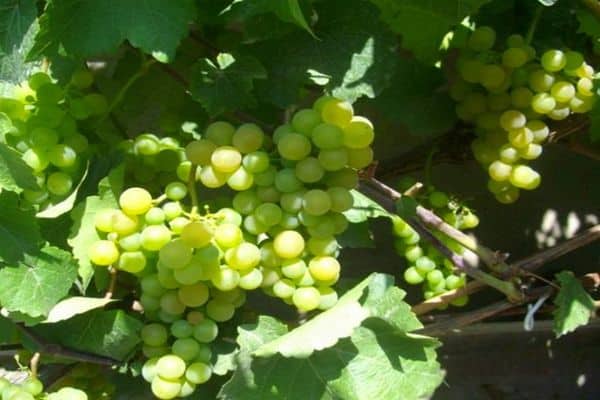
Disadvantages:
- berries that form on bunches do not differ in heroic sizes;
- in comparison with table grape varieties, Platovskiy cannot boast of similar harvest volumes.
Features and characteristics of the variety
The description of the variety, for completeness, is divided into two parts:
- a description of the appearance of the bush and grape bunch;
- crop yield, size and taste of berries.
Each item deserves special attention.
External parameters of the bush and shoots
The appearance of the bush is important to the grower. The Platovsky grape bush is characterized as follows:

- the bush does not take up much space, growing to medium size, relative to other crops;
- the bunch takes on a conical shape;
- the size of the bunch is small, and the berries are not densely located on it, but with small gaps.
Productivity, size and taste of berries
With regard to yield and taste, gardeners describe the following parameters:
- ripening of the crop, with proper care, occurs within 110 days. It is very fast, which is why the variety is considered ultra early;
- the number of bunches on one branch does not exceed 3 pieces;
- the weight of the bunch fluctuates around 200 grams;
- berries are small, with juicy pulp;
- the skin is thin, white;
- the weight of one berry does not exceed 2 grams.
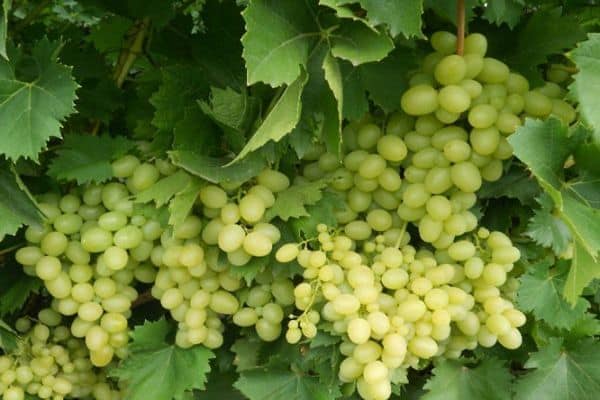
Note! The crop does not have to be picked on the day it ripens. The bunches can remain on the bush for a month, ripening and gaining sweetness.
Agrotechnics
The technology of planting and caring for grapes matters - the quantity, as well as the quality, the harvest depends on these factors.
Platovsky, by its nature, is not a capricious grape, does not require anxious, careful care. However, without adhering to the basic principles of planting and basic care, even he will not be able to show a decent harvest.
Seat selection
The place on the site that you allocate for planting must meet the following requirements:
- landing is performed on the south side of the site, away from tall buildings or fences;
- in the case when garden trees grow on the territory, the planting should not be located closer than five meters from them;
- it is not necessary to equip a plantation in a lowland. Moisture accumulates there, which will not have a beneficial effect on the condition of the bush;
- if the area is not level and there is a slope for the landing, place it as close to the center as possible.
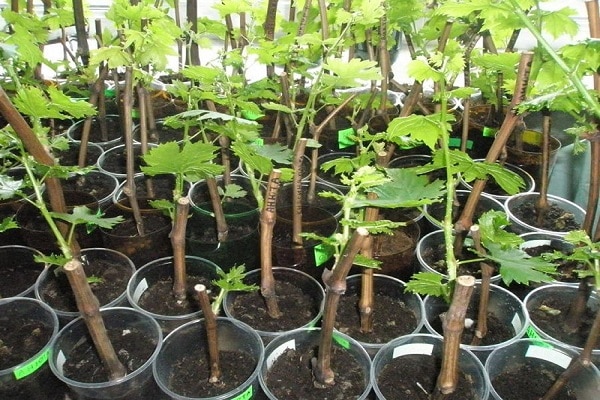
Seating scheme and hole sizes
The grapes are planted in a specially prepared seedling hole (hole), the minimum size of which is 60 x 60 centimeters. The pit is also 60 centimeters deep. We fill the prepared pit with the following mixtures:
- manure - 2 buckets;
- ash - one third of the bucket;
- 2 buckets of fertile soil;
- superphosphate - 150 grams.
The bushes are planted like this:
- distance between bushes - 3.5 meters;
- the distance between the rows is 2 meters.
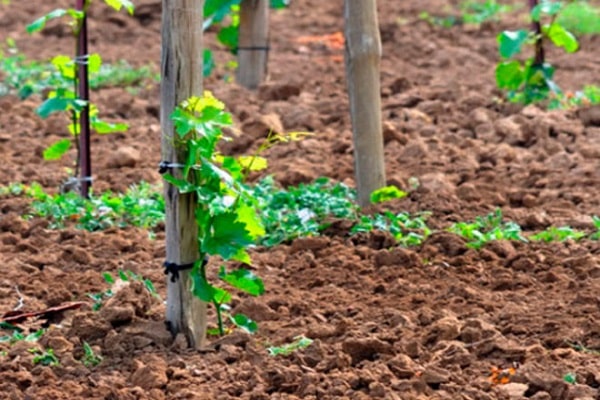
This technique is suitable when using a single-plane trellis. For a two-plane trellis, the distance between the bushes is slightly reduced.
Loosening and watering
Watering the bushes is required no more than 1 time within 7-8 days after planting. As soon as the bush grows up and gets stronger, the frequency decreases to once every 14 days. During dry periods, pay attention to the condition of the ground and bushes.
Increase watering frequency as needed. Remember to remove weeds that occasionally appear near bushes and loosen the ground, especially during rainy periods.
Foliar and root fertilization
Fertilizing grape bushes is not recommended earlier than the third year after planting. During this time, the grape bushes will get strong enough and begin to bear fruit. Priority is given to organic fertilizers and mineral-based products. Root feeding procedure:
- In the first half of spring.
- During the formation of inflorescences.
- During the ripening period of the grapes.
Foliar treatment is carried out by irrigating the leaves with special preparations containing useful compounds. These procedures are performed in cloudy weather or in the late afternoon.
Pinching
The grapes are pinched to accelerate the growth of the vine. Pinching is done in one of the following ways:
- before flowering, developed shoots break off in the area of 10 knots. This will act as a limiting factor for growth, which will subsequently result in more intense flowering;
- a couple of centimeters are torn from the top of each shoot, while at least three young leaves are left on them. It will also enhance the growth of the grapes.
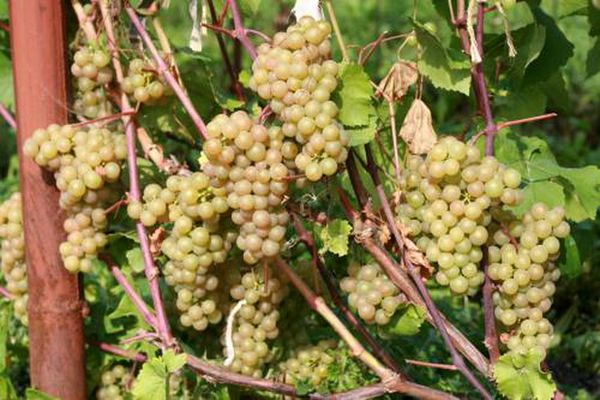
Pruning and shaping a fruiting vine
The grapes are pruned as follows:
- in the spring, only leaves that have died during the winter are removed from the bush;
- in autumn, the branches are pruned so that no more than 80 eyes remain on one bush;
- on average, each branch is pruned by 4 eyes, and that's enough.
In this way, excess shoots are removed and a fruiting vine is formed.
How to shelter grapes for the winter
The grape is a frost-resistant variety, and it is required to cover it for the winter only if:
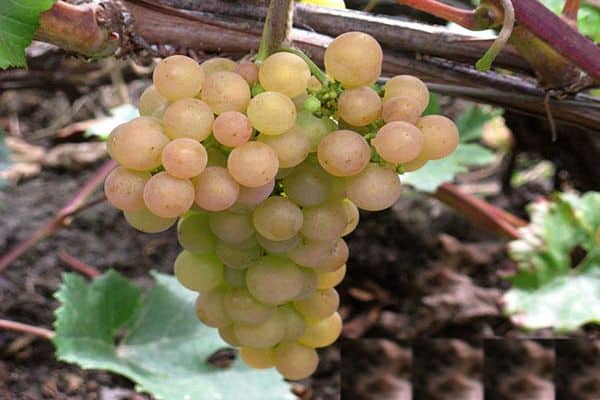
- the temperature in winter drops very low;
- there is little snowfall in winter.
In such cases, the bushes are covered with a special cloth, and the ground around is mulched. After precipitation falls, as much snow as possible is raked into the landing site, and snowdrifts form on top of the bushes. They will keep warm and prevent the variety from dying.
Ripening dates
The bunches ripen within 4 months. After, for 20-30 days, they can remain unpicked, ripening and gaining sweetness. You do not need to overexpose the bunches for longer, otherwise the grapes will start to deteriorate, and you will lose your harvest.
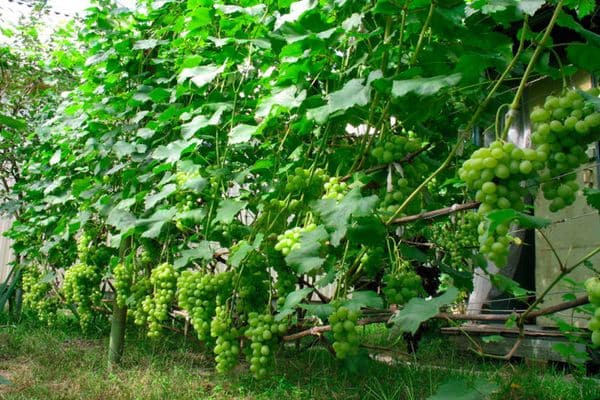
Harvesting and storage
It is better to pick the grapes gradually as they ripen. The bunches are carefully removed from the bush. It is better to cut them off with special scissors. Wooden boxes or baskets are suitable for storage containers. Storing food in buckets is not a good idea.
The harvest is stored according to the following scheme:
- boxes with grapes are stored at a temperature of 1 about up to 4 about;
- overripe bunches are removed as needed;
- Sprinkle fresh sawdust on the bunches to extend the shelf life.
Propagation of grapes
Grapes propagate in 3 ways:
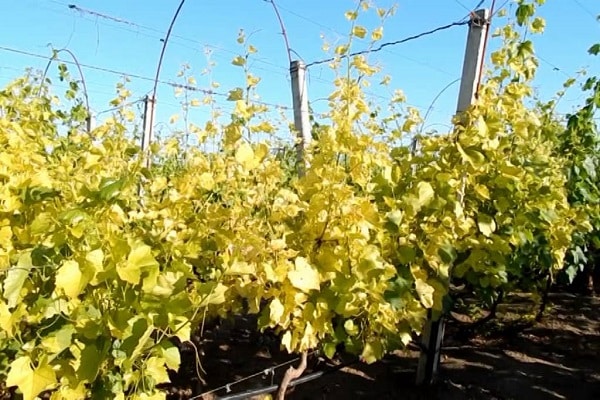
- With the help of seeds.
- Layers.
- By cuttings.
Each method has its own strengths and weaknesses. Seed propagation is considered the most unproductive method. This happens because shoots grown from seeds lose the key properties of the variety.
Diseases and pests - control and prevention
The variety is resistant to diseases and pests and does not need special processing. It is enough to carry out systematic examinations for plant infection. If characteristic signs indicating a disease or pest are found, the damaged leaves are removed, and the bush is treated with special means.
To protect against birds that peck berries, the bush is covered with a net. These security measures are usually more than enough. Do not spray berries with additional chemicals or kill birds.
Otherwise, you do not need to worry about the safety of the crop. A strong immune system will do the trick.

